A captivating array of eleven goose species graces the skies and waters in Florida, contributing to the state’s vibrant avian landscape.
Each species plays a unique role in Florida’s ecosystems, from the familiar Canada Goose to the exotic Egyptian Goose and the graceful Swan Goose.
This exploration delves into these geese’s scientific nuances, population dynamics, and captivating lifestyles.
Whether honking in synchronized flight or foraging in diverse habitats, these waterfowl exemplify the interconnected relationship between migratory birds and the diverse ecosystems they inhabit.
Join us on a journey through the fascinating world of eleven distinct goose species thriving in the Sunshine State’s varied environments.
10 Geese in Florida
Each species contributes to the rich ecological mosaic, from the iconic Canada Goose to the elegant Swan Goose, offering a glimpse into their unique lifestyles. Here are the 10 types of geese in Florida:
1. Canada Goose
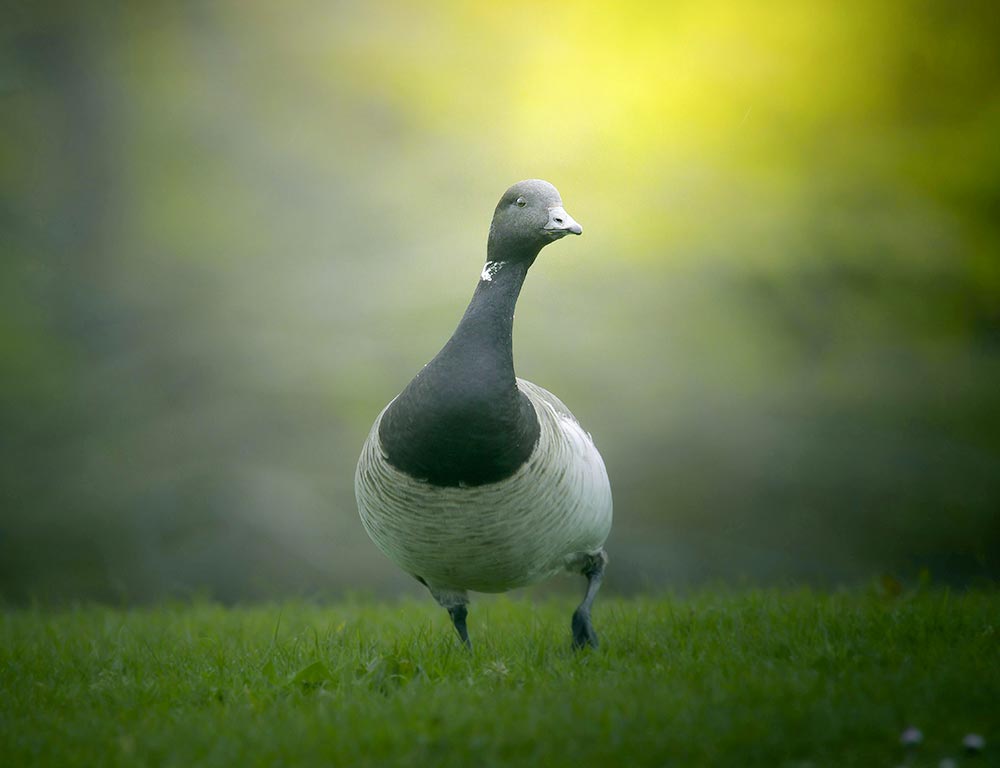
- Scientific name: Branta canadensis
- Category: Waterfowl
- Population: Common
- Life span: 10-24 years
- Size: 30-43 inches
- Weight: 3.2-14.5 lbs
- Status: Least Concern
The Canada Goose is a familiar sight in Florida, known for its distinctive black head and neck with a white “chinstrap.” These social birds often form large V-shaped flocks during migration.
They thrive in various habitats, including lakes, rivers, and fields. Their diet consists mainly of grasses, grains, and aquatic plants.
These geese are adaptable and have successfully adapted to urban environments. Canada Geese mate for life and are dedicated parents, raising their goslings with both parents actively involved in their care.
Their honking calls are iconic, especially during migration. While some consider them a nuisance due to their prolific droppings, Canada Geese play a crucial role in ecosystems by influencing plant growth and contributing to nutrient cycling in aquatic habitats.
2. Egyptian Goose
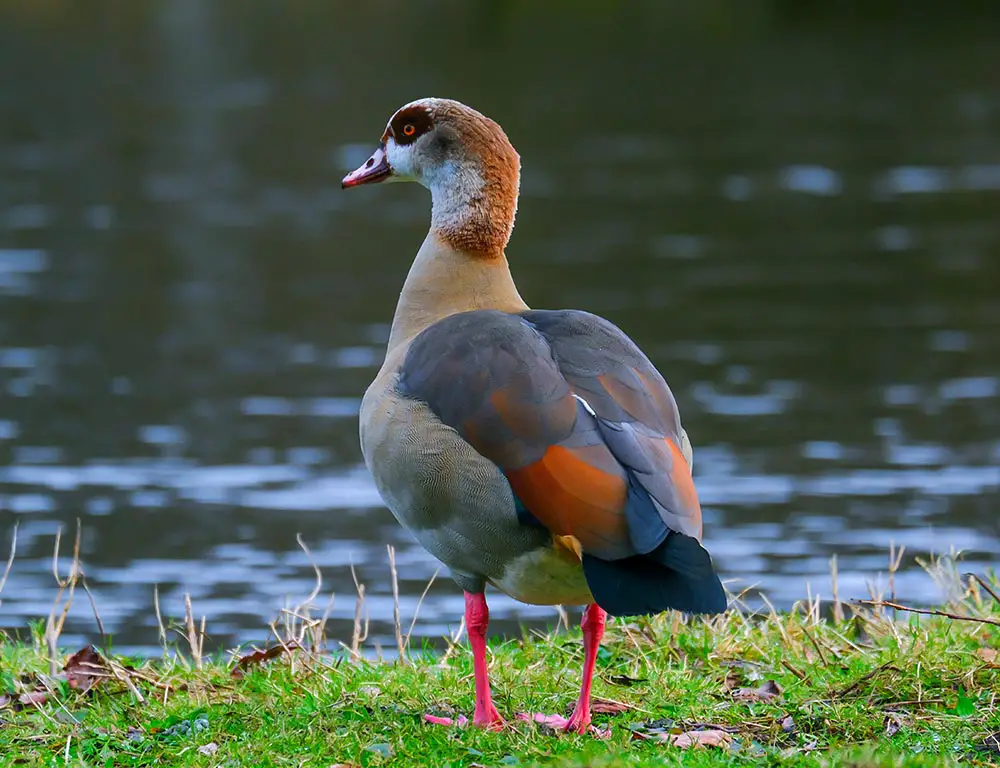
- Scientific name: Alopochen aegyptiaca
- Category: Waterfowl
- Population: Stable
- Life span: 15-20 years
- Size: 26-28 inches
- Weight: 3.3-5.5 lbs
- Status: Least Concern
With its striking chestnut eye patches and distinctive markings, the Egyptian Goose is a non-native species in Florida. Originally from Africa, they have established feral populations in various regions, including Florida.
They prefer freshwater habitats such as lakes and ponds, where they feed on a diet of grasses, seeds, and small invertebrates. Egyptian Geese are known for their strong pair bonds, often forming lifelong partnerships.
They are territorial, with pairs defending nesting sites vigorously. Their nesting sites are typically near water, and they construct nests from vegetation.
Egyptian Geese exhibit monogamous behavior, and both parents contribute to caring for their offspring. While they are not as vocal as Canada Geese, they can produce a range of hissing and honking sounds.
3. Snow Goose
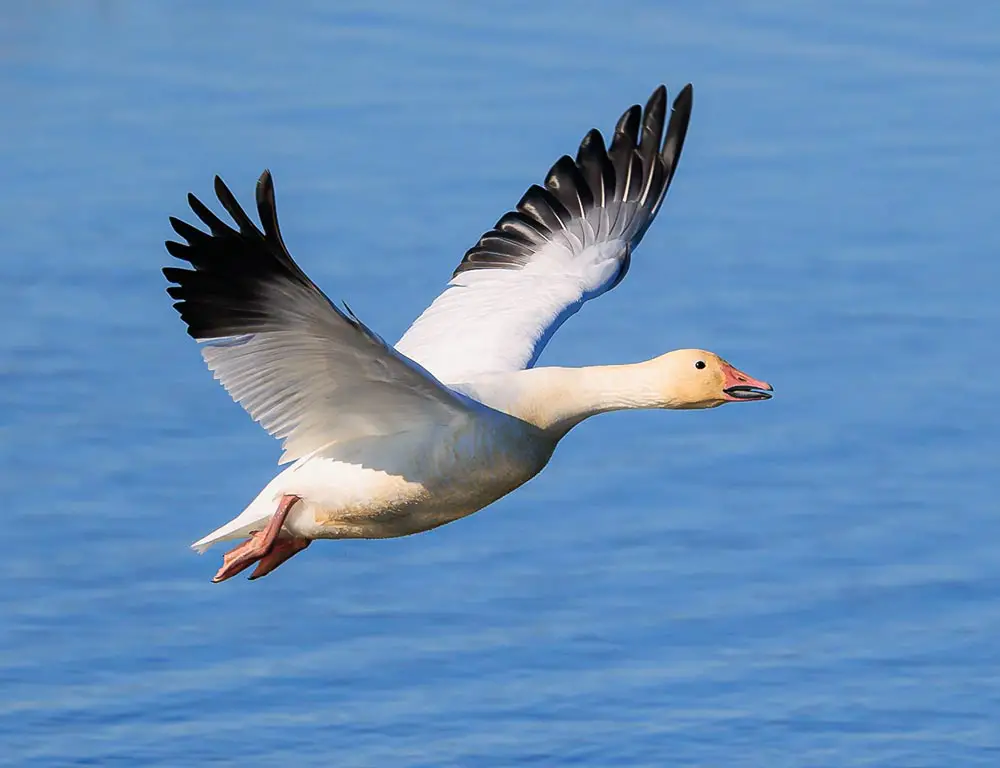
- Scientific name: Anser caerulescens
- Category: Waterfowl
- Population: Stable
- Life span: 5-15 years
- Size: 25-32 inches
- Weight: 3.7-7.3 lbs
- Status: Least Concern
The Snow Goose, named for its white plumage, is a migratory species that visits Florida during the winter.
With a distinctive black “grin patch” on its bill, this goose is known for its large flocks that can be seen soaring in the sky during migration. They feed on a varied diet of grasses, sedges, and grains.
Snow Geese exhibit remarkable breeding behavior, often forming large colonies in Arctic tundra regions during the nesting season.
They have two color morphs: the white morph, which is predominantly white, and the blue morph, which is grayish-blue. Snow Geese engage in elaborate courtship displays, including synchronized calls and movements.
Conservation efforts have focused on maintaining their habitats and managing population levels, as they can significantly impact Arctic ecosystems.
4. Brant Goose
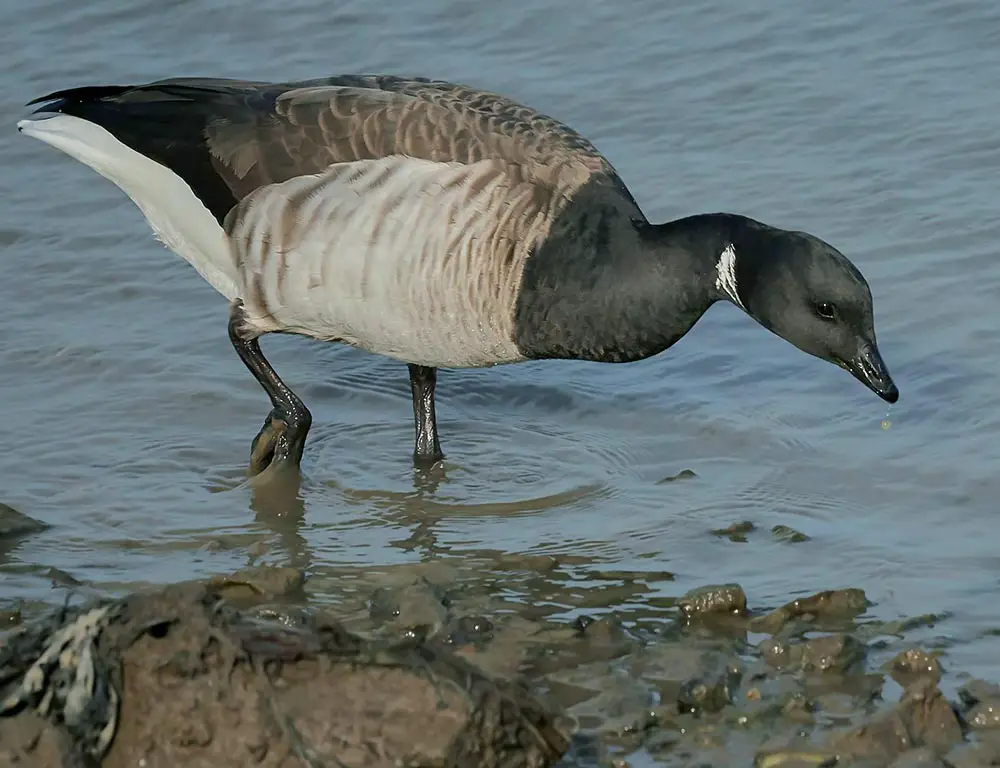
- Scientific name: Branta bernicla
- Category: Waterfowl
- Population: Stable
- Life span: 10-24 years
- Size: 22-26 inches
- Weight: 2.2-4.4 lbs
- Status: Least Concern
The Brant Goose is a smaller goose species with a dark neck and chest, contrasting with a pale gray body.
During winter, some Brant Geese migrate to Florida, where they prefer coastal habitats, including estuaries and saltwater marshes. Their diet primarily consists of eelgrass and other aquatic vegetation.
Brant Geese are known for their strong migratory instincts, flying long distances between their breeding grounds in the Arctic and wintering areas in places like Florida.
They often form large flocks during migration, where their distinctive “barking” calls can be heard. Despite facing habitat loss and climate change threats, the Brant Goose population remains relatively stable.
5. Greater White-fronted Goose
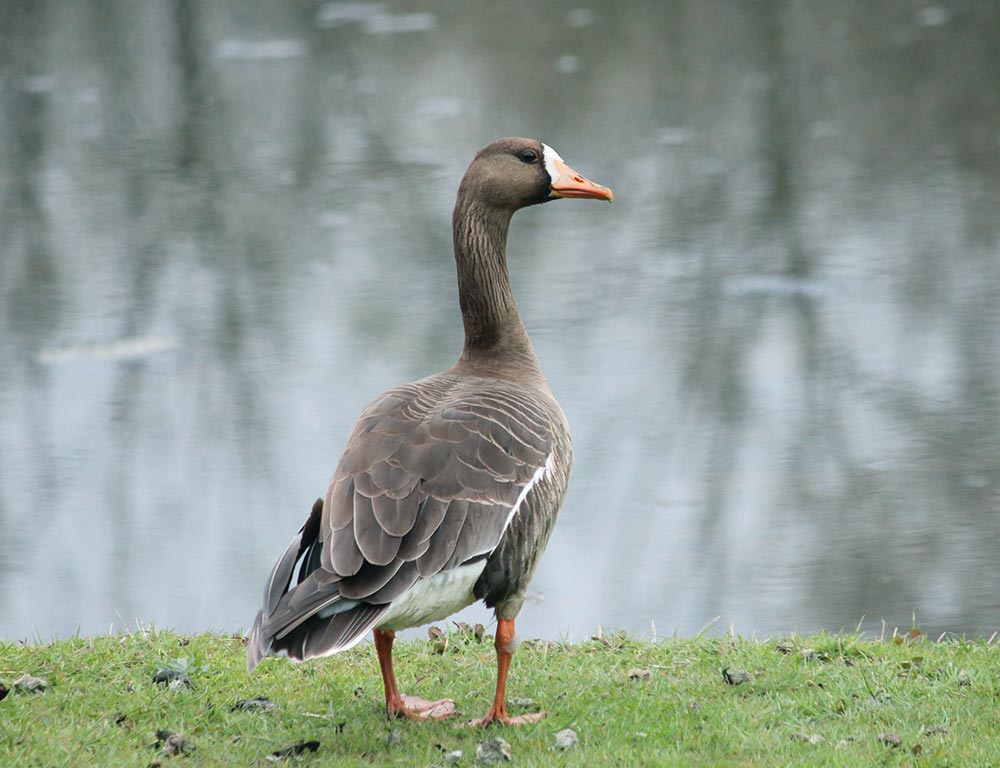
- Scientific name: Anser albifrons
- Category: Waterfowl
- Population: Stable
- Life span: 9-15 years
- Size: 25-32 inches
- Weight: 3.3-7.7 lbs
- Status: Least Concern
The Greater White-fronted Goose, also known as the “specklebelly” for its mottled belly feathers, is a winter visitor to Florida.
These geese prefer wetlands, agricultural fields, and grasslands, where they feed on a varied diet of plant matter and grains.
These geese are highly vocal, with distinctive yelping calls. They are often seen in family groups or small flocks. During the breeding season, they nest in the Arctic tundra.
Greater White-fronted Geese are known for their migratory prowess, covering vast distances during their annual journeys.
While they face threats like habitat loss, their populations remain stable, benefitting from conservation efforts that preserve their critical habitats.
6. Ross’s Goose
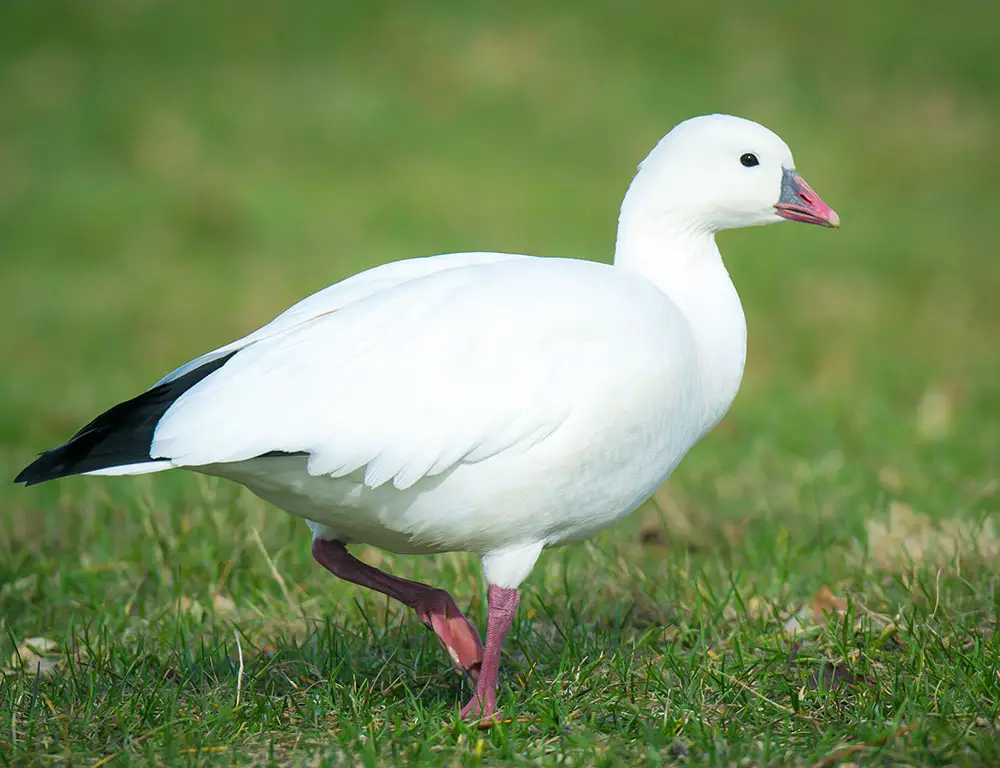
- Scientific name: Anser rossii
- Category: Waterfowl
- Population: Increasing
- Life span: 5-20 years
- Size: 22-28 inches
- Weight: 2.2-4.4 lbs
- Status: Least Concern
Ross’s Goose, similar in appearance to the Snow Goose, is a smaller and more delicate species. They are occasionally spotted in Florida during the winter, especially in freshwater habitats.
Like the Snow Goose, Ross’s Goose has a white plumage with a distinctive “grin patch” on its bill. Ross’s Geese primarily feed on grasses and grains. They are known for their social nature, often forming large flocks during migration.
Despite their increasing population, conservation efforts remain important to preserve their breeding grounds in the Arctic. Ross’s Geese play a crucial role in shaping Arctic ecosystems, and their behavior during migration is a spectacle for bird enthusiasts in Florida.
7. Swan Goose
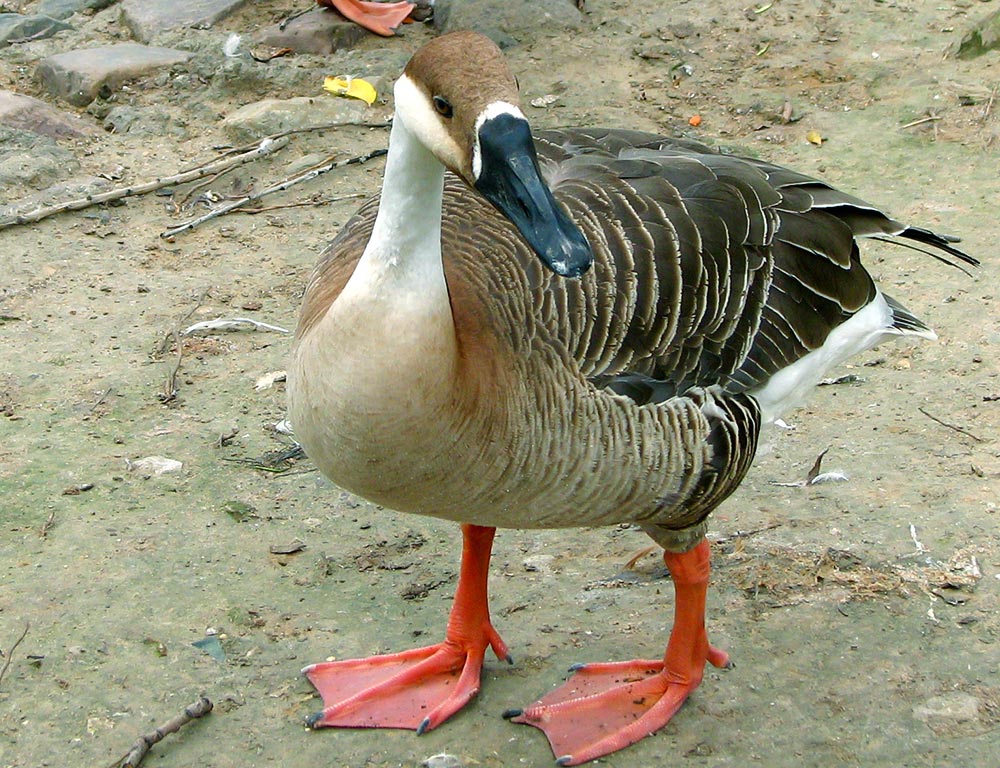
- Scientific name: Anser cygnoides
- Category: Waterfowl
- Population: Stable
- Life span: 10-20 years
- Size: 33-43 inches
- Weight: 6.6-14 lbs
- Status: Least Concern
The Swan Goose is a striking species with a distinctive black and orange bill, resembling a swan more than a typical goose.
Native to East Asia, it is occasionally seen in Florida, especially in wetlands and freshwater habitats. Their diet consists of aquatic plants, grasses, and grains.
Swan Geese are known for their elegant appearance and are often kept in captivity for ornamental purposes. In the wild, they are social birds that form family groups and flocks.
During the breeding season, they build nests in grassy areas near water. Conservation efforts aim to protect their habitats and address potential threats such as habitat loss and degradation.
8. Cackling Goose
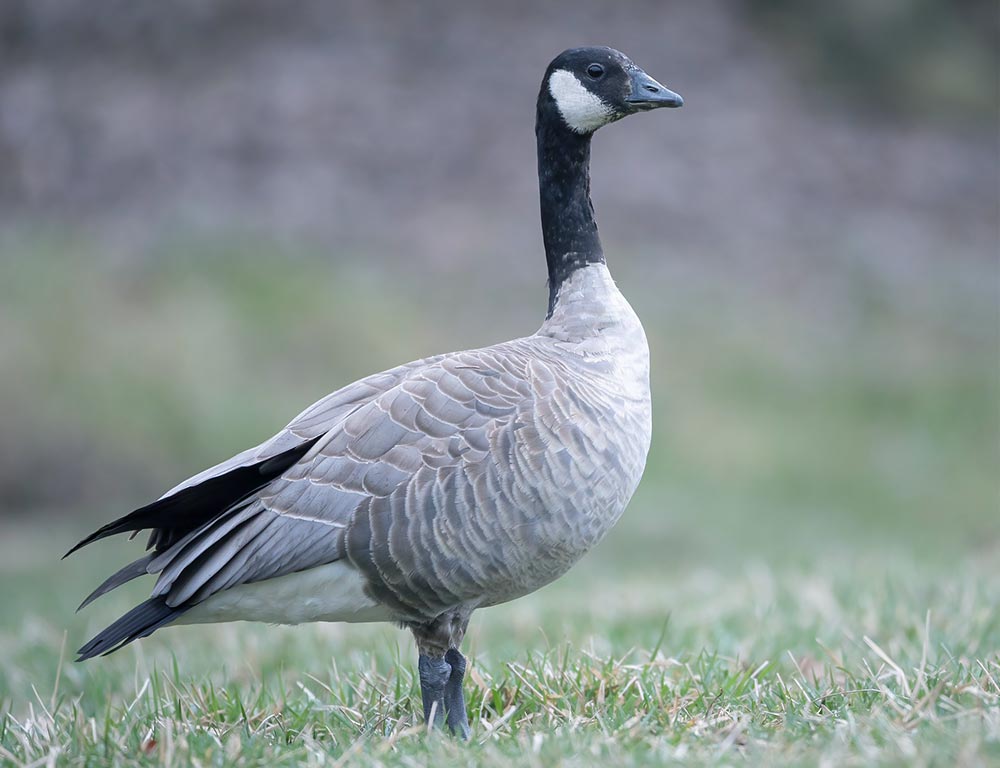
- Scientific name: Branta hutchinsii
- Category: Waterfowl
- Population: Increasing
- Life span: 10-24 years
- Size: 20-22 inches
- Weight: 1.8-3.5 lbs
- Status: Least Concern
The Cackling Goose is a smaller cousin of the Canada Goose, often found in Florida during migration.
With a stocky build and a short neck, they share some physical characteristics with the Brant Goose. They inhabit a variety of wetland habitats, grazing on grasses, grains, and aquatic vegetation.
These geese are highly social and communicate using a range of vocalizations. During migration, they form large flocks and are often seen flying in V-shaped formations.
Cackling Geese are adaptable, utilizing both natural and urban environments. Conservation efforts have contributed to their increasing population, ensuring that these geese continue to thrive in their diverse habitats.
9. Greylag Goose

- Scientific name: Anser anser
- Category: Waterfowl
- Population: Stable
- Life span: 10-30 years
- Size: 30-37 inches
- Weight: 4.4-10 lbs
- Status: Least Concern
The Greylag Goose is a widespread and adaptable species found in various habitats, including lakes, rivers, marshes, and grasslands.
Recognizable by its grayish-brown plumage and orange beak, Greylag Geese are occasionally seen in Florida, particularly in winter. Their diet consists of grasses, grains, and aquatic plants.
Highly social, Greylag Geese form large flocks during migration. They are known for their loud honking calls, contributing to the characteristic soundscape of wetland areas.
Greylag Geese exhibit strong pair bonds and engage in elaborate courtship displays during the breeding season. Conservation efforts aim to protect their diverse habitats and address potential threats such as habitat loss and disturbances.
10. Barnacle Goose
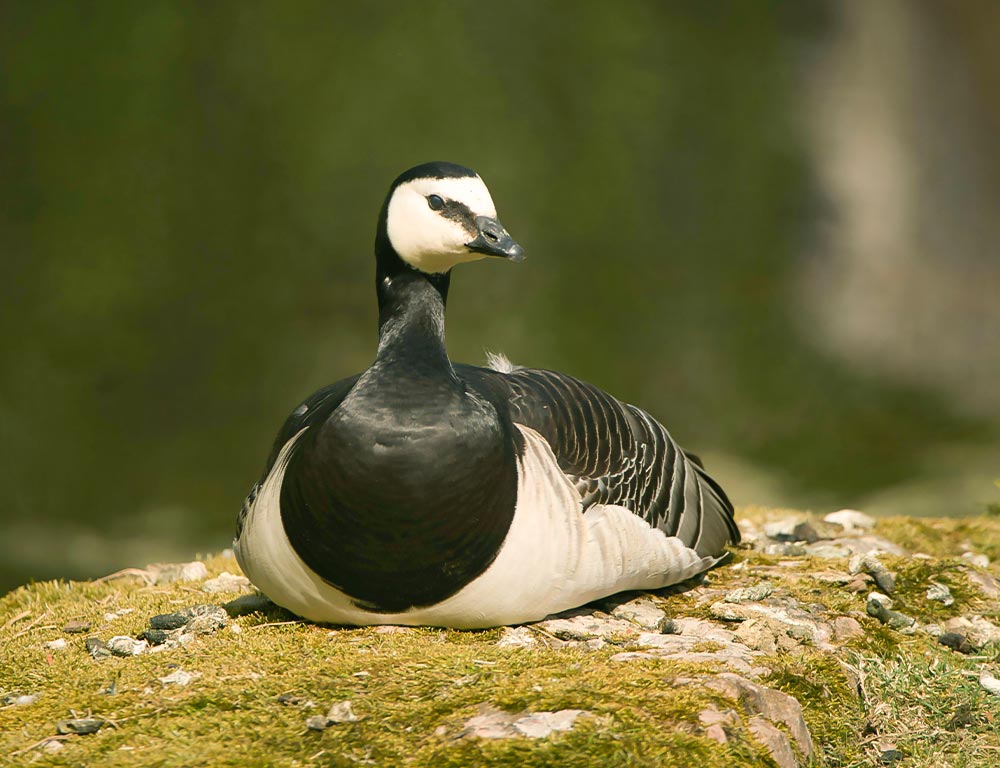
- Scientific name: Branta leucopsis
- Category: Waterfowl
- Population: Stable
- Life span: 10-25 years
- Size: 21-26 inches
- Weight: 2.2-4 lbs
- Status: Least Concern
The Barnacle Goose is known for its distinctive black and white plumage and is a winter visitor to coastal areas in Florida.
They inhabit various environments, including coastal marshes, estuaries, and grasslands. Barnacle Geese feed on grasses, sedges, and other vegetation.
Barnacle Geese are social birds that often form large flocks during migration. They are monogamous and form strong pair bonds, with both parents actively involved in raising their offspring.
During the breeding season, they nest in Arctic tundra regions. Conservation efforts focus on protecting their breeding grounds and ensuring the availability of suitable wintering habitats.
Despite their name, Barnacle Geese do not have a biological connection to barnacles, but the name likely stems from a medieval belief that they hatched from barnacles attached to floating timber.
Wrapping Up
In concluding our exploration of the eleven goose species in Florida, it’s evident that these avian inhabitants contribute significantly to the state’s ecological diversity.
Each species paints a unique stroke on the canvas of Florida’s natural beauty, from the iconic Canada Goose to the exotic Swan Goose.
Their migratory patterns, distinct behaviors, and vital roles in local ecosystems underscore the interconnectedness between these waterfowl and their environments.
By understanding and appreciating the lives of these geese, we gain a deeper insight into the delicate balance that sustains Florida’s avian inhabitants.
As stewards of the environment, it becomes imperative to preserve and protect the habitats that support these majestic creatures, ensuring their continued presence in the Sunshine State’s rich tapestry of life.